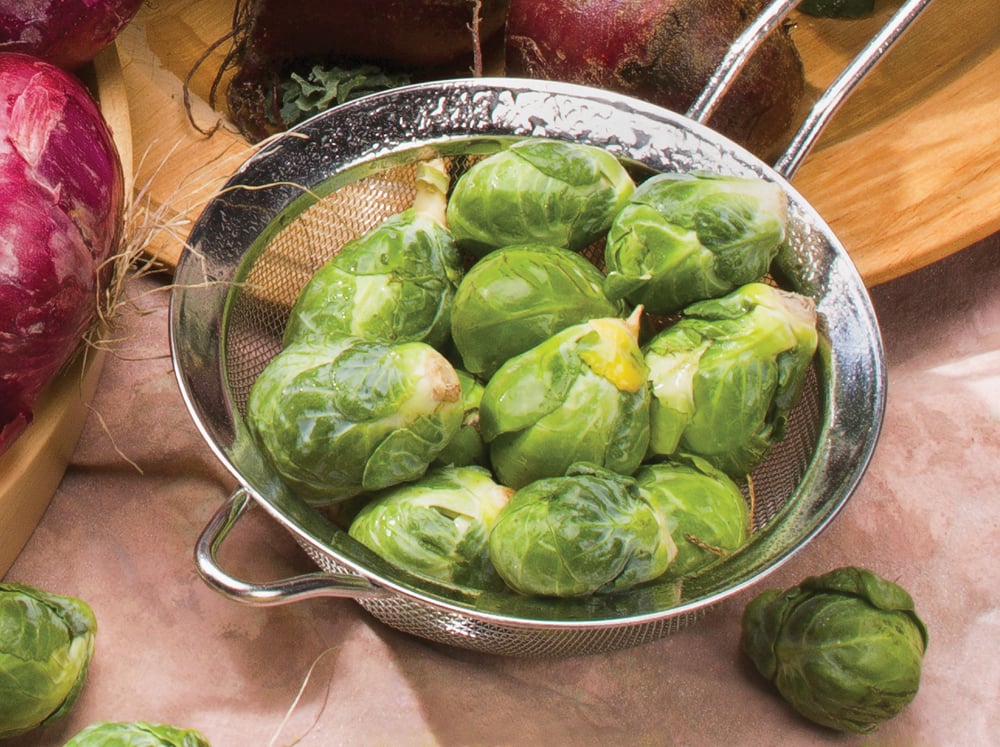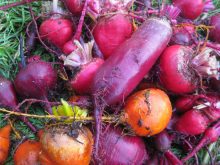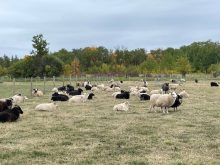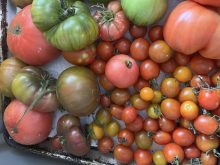At the countless farm sites I have visited over almost 50 years from coast to coast in Canada, from Newfoundland to Vancouver Island, I have come across outstanding crop growing innovations and excellent crops as well as abject crop failures.
To deal logically with the extensive range of crops, I put them, as described previously, into related groups, since they have similar disease, insect and weed control problems. For example, the cabbage or cole crop family is virtually all brassica species; consequently, we have similar methods of growing them and solving cultural problems. There are hundreds of brassica species and all have the characteristic cross-shaped flower petals, from mustards to broccoli.
Read Also

Gentle treatments for pain in the neck
Heading toward year-end, people unknowingly tense up against the cold and busyness, causing neck pain that can often be treated with appropriate support and gentle mobility, athletic therapist Kathlyn Hossack says.
Cole or cabbage crops on the Prairies
I will not deal to any extent with soil fertility, soil testing, fertilizer application, watering or weed control. You would normally site the garden on good proven soil and add fertilizers, either concentrated forms such as ammonium phosphate or organic forms such as poultry manure, both at reasonable rates. Cattle manure, peat moss and composts are generally poor sources of plant-essential nutrients but excellent as soil amendments, particularly for their water-holding capabilities — particularly important in dry years.
Cole or cabbage crops are the most difficult crops to grow on Prairie cropland. The reason: canola. The canola grown in Canada is in reality a flowering rutabaga, commonly called Argentine canola. The millions of acres we use for canola crop production have become a primary breeding ground for vast amounts of canola insect pests and diseases that can wipe out or damage all our garden cole crops. Among pests of canola we have, for example, three species of flea beetles, countless root maggots, turnip beetles, bertha armyworm, diamondback moth and cabbage white butterfly larvae, to name a few. These insect pests multiply in untold massive numbers on the seasonal canola crops and unfortunately invade our farm and market gardens, often wiping out or damaging your garden’s cole crops.
If I were serious about commercially growing cauliflower, cabbage, broccoli or rutabagas I would move to Edson, Alta. or another climate-suitable location in Canada where canola was not grown in any amount, such as in Ontario, British Columbia or the Maritimes.
In early spring canola, flea beetles take to the sky and look for any and all cole crop growth. We can use a number of insecticides to control them. Right after the flea beetles we have billions of root maggots scouring the Prairie skies, hunting for any and all cole crops to infest. How many times have you seen May-planted cabbage or cauliflower seedlings grow rapidly for a few weeks but by early June are either dead or dying due to root maggot infestations?
Canadian market and farm gardeners did have an effective insecticide, carbofuran, but this product was banned many years ago due to its toxicity to birds. This product is still available in the U.S. and many other countries for use on cole crops. Chlorpyrifos (Lorsban) and diazinon can be used in Canada for protection against root maggots. On a smaller scale, floating cloth covers can be used and are available for sale in most seed catalogues and horticultural outlets. Grown under cloth, cole crops such as cauliflower, broccoli, radish or cabbage can be regarded as organically grown.
Many years ago, I grew root maggot-resistant Brussels sprouts. The roots were indeed maggot-resistant, but the sprouts themselves were infected with root maggot larvae.
There are three insecticide chemical families registered for use against root maggot: cypermethrin, cyantraniliprole and chlorpyrifos. On the Prairies, the root maggot has two generations per year. The first and most damaging is in early spring; the second, in late summer, is much less damaging, except on rutabagas, due to ugly tunnelling into the developed root.

Personally, I plant cabbage, cauliflower and broccoli in late May to avoid the peak maggot population. I can usually get away with it, but my rutabagas are always damaged by unsightly tunnels. The summers of 2022 and likely 2023 were so hot my Brussels sprouts failed to form sprouts before freeze-up, forming just open rose-like miniature cabbages.
Cabbage white butterfly larvae (imported cabbageworm) are a constant problem but can be controlled with biologicals such as Bacillus thuringiensis or an insecticide such as chlorantraniliprole. If you fail to use insecticides — biological or chemical — on your cauliflower, cabbage or broccoli and are not squeamish, you can remove them by immersing the cole crop heads in hot water from the tap — that is, water at around 60 to 70 C (150 F). Washing in hot water will kill off and remove the green caterpillars.
In fact, due to the abundance of cabbage (cole crops) pests, radish, cauliflower, broccoli, all forms of cabbage, turnips and rutabaga are all difficult to raise free of insect pest disfigurements. Brussels sprouts may be a good bet, but kohlrabi is the only sure-bet crop to grow damage-free on the Prairies.
If you must grow cole crops, use horticultural fleece. This is a white cloth that comes in assorted sizes and weaves but generally allows 80 per cent of light transmission. Your cole (cabbage) crop seedlings, including radish, must be covered at all times. You can use wood or metal supports for the cloth and wooden planks to hold down the edges of the cloth. I have had excellent results growing cole crops with a nine-by-15-foot (three-by-five-metre) cloth. If care is taken, the cloth can last many seasons.

As far as diseases are concerned, cole crops can be damaged by fungal and bacterial leaf spots, downy mildew and sclerotinia (white) mould. By far the biggest damage — the elephant in the room — comes from clubroot.
If clubroot gets into your colony, market or farm garden, it may be the end of your ability to grow cole crops on that land, since all cole crops are usually susceptible. The clubroot fungus can persist for up to 10 years or more in Prairie garden soils and to my knowledge, resistances to this soil-borne fungus in the cabbage family are few and far between. If your garden cropland becomes infested with clubroot, you can either quit growing cole crops or set up another garden location free of the soil-borne clubroot fungus.
If your present garden location is free of clubroot, you should use all efforts to prevent the introduction of clubroot-infested soil. If you know of clubroot-infested land on your farm, rented land or nearby farmland, you should ensure no mud (earth) enters your garden area. You must be fully vigilant in this respect or you lose the ability to grow worthwhile cole crops on your vegetable cropland.
It’s always good to know what you did not know.
















